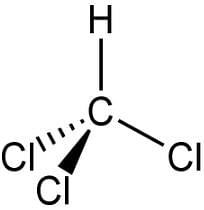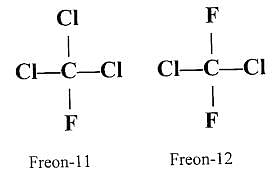NEET Exam > NEET Tests > Topic-wise MCQ Tests for NEET > Test: Polyhalogen Compounds - NEET MCQ
Test: Polyhalogen Compounds - NEET MCQ
Test Description
10 Questions MCQ Test Topic-wise MCQ Tests for NEET - Test: Polyhalogen Compounds
Test: Polyhalogen Compounds for NEET 2024 is part of Topic-wise MCQ Tests for NEET preparation. The Test: Polyhalogen Compounds questions and answers have been
prepared according to the NEET exam syllabus.The Test: Polyhalogen Compounds MCQs are made for NEET 2024 Exam. Find important
definitions, questions, notes, meanings, examples, exercises, MCQs and online tests for Test: Polyhalogen Compounds below.
Solutions of Test: Polyhalogen Compounds questions in English are available as part of our Topic-wise MCQ Tests for NEET for NEET & Test: Polyhalogen Compounds solutions in
Hindi for Topic-wise MCQ Tests for NEET course. Download more important topics, notes, lectures and mock
test series for NEET Exam by signing up for free. Attempt Test: Polyhalogen Compounds | 10 questions in 15 minutes | Mock test for NEET preparation | Free important questions MCQ to study Topic-wise MCQ Tests for NEET for NEET Exam | Download free PDF with solutions
Test: Polyhalogen Compounds - Question 1
The chloro compound which can be used as fire extinguisher is:
Detailed Solution for Test: Polyhalogen Compounds - Question 1
Test: Polyhalogen Compounds - Question 2
Exposure to lower levels of a compound in air can lead to slightly impaired hearing and vision. Identify the compound.
Detailed Solution for Test: Polyhalogen Compounds - Question 2
| 1 Crore+ students have signed up on EduRev. Have you? Download the App |
Detailed Solution for Test: Polyhalogen Compounds - Question 3
Detailed Solution for Test: Polyhalogen Compounds - Question 4
Test: Polyhalogen Compounds - Question 5
The antiseptic properties of iodoform is due to which of the following:
Detailed Solution for Test: Polyhalogen Compounds - Question 5
Test: Polyhalogen Compounds - Question 6
Which one of the following is the correct formula of methylene dichloride?
Detailed Solution for Test: Polyhalogen Compounds - Question 6
Test: Polyhalogen Compounds - Question 7
Central nervous system can be depressed by the use of which of the following:
Detailed Solution for Test: Polyhalogen Compounds - Question 7
Test: Polyhalogen Compounds - Question 8
Paul Muller of Geigy Pharmaceuticals in Switzerland discovered the effectiveness of DDT as:
Detailed Solution for Test: Polyhalogen Compounds - Question 8
Detailed Solution for Test: Polyhalogen Compounds - Question 9
Detailed Solution for Test: Polyhalogen Compounds - Question 10
|
9 docs|1272 tests
|
Information about Test: Polyhalogen Compounds Page
In this test you can find the Exam questions for Test: Polyhalogen Compounds solved & explained in the simplest way possible.
Besides giving Questions and answers for Test: Polyhalogen Compounds, EduRev gives you an ample number of Online tests for practice



















